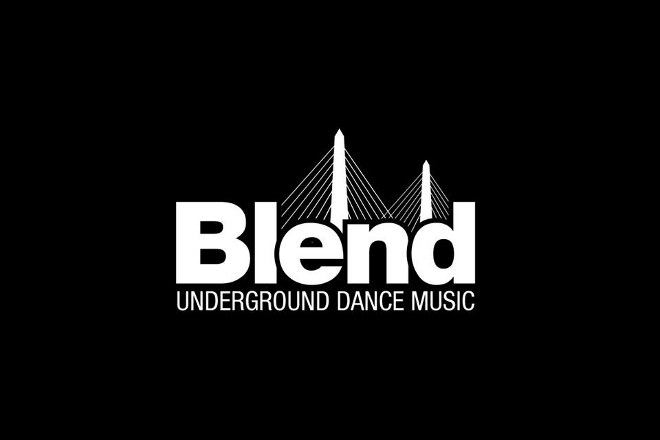When you look at the decades of music coming out of the city of Boston, across multiple genres, it’s not particularly impressive. Rock’s relegated to group Boston or the Dropkick Murphys. Hip-hop’s face is Marky Mark, who won’t even talk about his brief rapping career, or one-hit-wonder House of Pain. And pop extends from New Kids on the Block to Jojo.
Yet even with these wretched oeuvres in music’s pantheon, Boston’s underground scenes far exceed, at least in terms of quality, anything that ever reached the mainstream. Punk acts have found success and plenty of places to play for 30-plus years, while a small political hip-hop scene brought the Electric Company and off-shoot group Project Move. So does electronic dance music fall similarly in line?
Not quite. Dance music throughout New England has been scattershot for years (as Residential Advisor details). There’s never really been a cohesive scene: Hartford had its warehouse parties, while the late ‘90s and early ‘00s turned Boston’s Lansdowne Street into a hopping mainstream hotspot with clubs like Axis and Avalon. Much of this reflected the music of the time: You might’ve heard of that guy Tiesto or maybe you had Benny Benassi’s “Satisfaction” on your iPod, but hip-hop and pop ruled the radio, and consequently, any night catering to college students (allegedly, they make up 40-percent of Boston’s population) gravitated in this direction. That’s not to say you had to tolerate the cheap-drinks-to-draw-21-year-old-hotties tactic; across the river, Cambridge was home to Manray, a club playing synthpop, disco, and what’s now described as “darkwave,” for a number of years, and TT the Bear’s and the Middle East still attract underground acts across multiple genres.
10 years later, the nightclubs in the shadow of Fenway Park have been replaced by the House of Blues, where you’ll find mainstream touring DJs/producers come by for a two-hour show. Clubs attracting the typical college student have shifted over to Massachusetts Avenue or the Theatre District, but a few underground nights have materialized, with Blend at Machine being one.
Blend advertises itself as a night combining house, jungle, drum ‘n’ bass, breaks, and techno, with multiple promoters coming together to put on this once-a-month event. I had a chance to check it out on October 4th, when Chicago house veteran Mark Farina was the night’s main attraction.
There’s one thing to keep in mind when reviewing any club night in Boston – everything gets off to a slow start around 9 or 10 p.m. and then promptly shuts down at two. The all-night parties that go on in New York (like Danny Tenaglia did at Pacha NYC a few years ago) simply can’t happen here, so you go to hear the music and dance for a few hours into the early morning.
And essentially, the music is why you’d go out to Machine for Blend. The atmosphere is a bit more “bar” than club on the lower level where the event is held. Particularly, the smaller “breaks” room where techno and jungle were spun by DJ Reel Drama, DJ Bookum, and DJ JSB was taken up more than half by a pool table and bar. The main room, where Daniel V played for the first hour until Farina arrived, was a bit more dancing friendly, and consequently, that’s where the crowd gravitated. While the night partially bills itself as something ‘90s influenced, what you end up getting is less of a warehouse party and more of a small club where decent music’s played.
If it’s underground you’re seeking out, and not, say, a touring club DJ or a night focusing on progressive house, trap, and dubstep, Blend delivers above and beyond what you’ll find locally. Daniel V began strongly with a set that, over the course of an hour, crescendoed with a classic deep house groove. A few familiar vocal samples made their way in there, but especially with what’s being pushed as deep house on a mainstream level, Daniel V kept it timeless: minimal, swinging, and with gradual ebbs and flows.
It made a good introduction for Farina to arrive behind the decks. The Chicago house producer known for his jazz-influenced style delivered complex horn lines, while beefing up the bass. The groove didn’t change. Rather, it grew into the mold audiences expect from a house DJ: Heavy and emphatic, with the kick drum and percussion only cutting out briefly, without losing its old-school integrity. As some complain that modern “mainstream” deep house is too uplifting and vocal-driven, Farina exemplifies the balance between staying authentic and appealing to your audience.
On the other hand, Farina was Blend’s strong point. The room playing techno and jungle flowed unevenly between the two subgenres. Minimal became percussive, winding textures, with the occasional vocals, while transitions between tracks ended up too sharp and obvious at points. Not everything gelled fully, and what was coming out of the speakers contrasted too strongly from what was going on in the other room to the point that it felt secondary.
In the Northeast, Boston’s nightlife scene, as a whole, can’t compete with what you’ll find in New York or even Philadelphia, so expectations should be adjusted. However, if you’re looking for quality underground music away from the college nights and bottle service clubs, Blend’s the best thing the city offers for dance music listeners.




